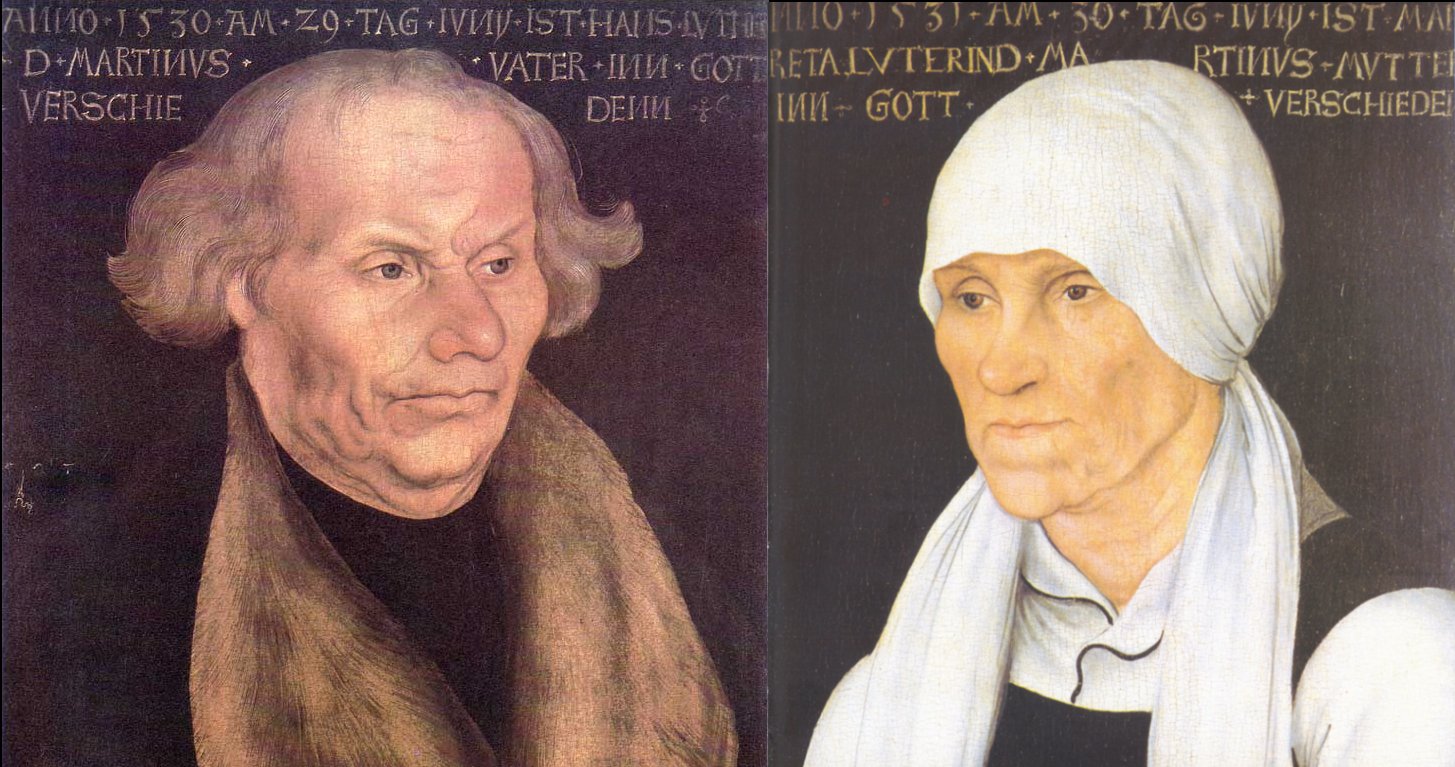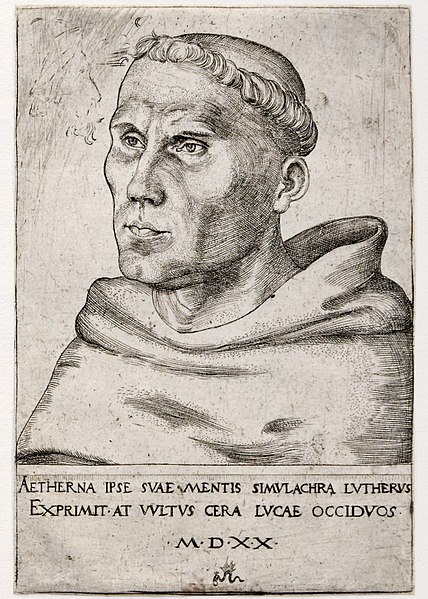Cursing, Raving, and Ranting: Luther and Manuscript 494
In our vault lies Manuscript 494, the Luther Bible of Groningen from 1527. It has been here for centuries, so we have become accustomed to its presence. Which is why we are no longer struck by how exceptional it is as a historical object, or how it marked the end of the Middle Ages. To grasp its importance, we must first understand who Luther was.
Child abuse often continues to affect the victims throughout their lives, and Luther was no exception. His particularly violent father often beated the young Luder (the family's real name) until he drew blood. His mother, an exceptionally superstitious woman, frightened her child with threats of the Teufel (Devil) who lurked everywhere, ready to pounce on innocent children.

This did not stop young Luder from developing a lucid mind. He attended secondary school in Eisenach, and later studied in Erfurt. His father had decided that he should study law since this would give him the most options (five centuries later, some things haven’t changed). As a law student, Luder was a tormented and anxious soul. When surprised by a thundering storm on his way from Erfurt to his parents in Eisleben, he lost his senses, fell to the ground, and blurted out a promise: ‘Holy Anna, save me, and I will enter a monastery.’ He survived the storm and since ‘a promise is a promise’, he informed his unobliging father of his decision. Luder grew to become an exemplary monk at the Augustinian monastery in Erfurt. He prayed and fasted until he was nothing but skin and bones.

But none of this freed him of his psychological suffering, anxieties, depression, inferiority complex, and longing for salvation. Thanks to his thorough knowledge of Latin, and because the abbot was hoping to relieve Luder of his oppressive and anxious feelings, he was sent to Holy Rome. There, to his astonishment, he discovered a world in stark contrast to his ideals of sobriety, poverty, and spiritual salvation. Lust for power, debauchery, and excess was what he found. The papal tiara was worn by the profligate Pope Julius II, whose name derived not from a papal predecessor but from the Roman general Julius Caesar. He was known as the Warring Pope, even though it was he who had his now world-famous private quarters painted by Raphael and the Sistine Chapel by Michelangelo. According to Luder, the papal throne was in reality the ‘Seat of the Devil’.
This visit changed Luder. He no longer believed in the Catholic doctrine that claimed that you could buy off your sins with large sums of money, or earn salvation through prayer and good works. He had become a different person and, to express this, he changed his name to Eleutherius (meaning ‘the redeemed’, ‘the free’), later shortened to Luther. Back in Germany, teaching at the University of Wittenberg, he nailed (or so the story goes) his 95 theses to the church door, including thesis 86: ‘Why doesn’t the Pope build St. Peter with his own money, instead of with that of poor believers?’ If salvation was not to be achieved through prayer or fasting, or to be granted by the Pope and his bishops, where was it to be found? In the Bible, was Luther’s answer. Only in Holy Scripture: Sola Scriptura.
He was personally called to answer for his views and theses in front of Emperor Charles V at the Diet in Worms. A century earlier, a predecessor of Luther, Jan Hus, had been burned at the stake as a heretic, despite being promised a free-conduct by the Emperor at the time, so Luther was taking a substantial risk. At the Diet, he spoke thus to the Emperor: ‘Unless I am convinced by Scripture and clear reason, I cannot do otherwise. God help me. Amen.’
On the way back from Worms – the Prince-Elector of Saxony, Friedrich the Wise, had provided a free-conduct – Luther was abducted to Wartburg Castle. This turned out to be a ruse to remove him from public view and hide him, since the Emperor had outlawed him. High above the town of Eisenach, he began to work on his translation of the New Testament into German, based on the Greek source text. This was possible thanks to the Augustinian monk and humanist Erasmus of Rotterdam, who had published the Greek text in 1516 and then once again 1519, with his own Latin translation. A critical edition, from which all medieval additions, errors, and falsifications had been removed. Precisely what Luther needed, a text over which the Pope and the clergy had had no say.
Were Erasmus and Luther on the same path? No, even though it looked that way at first, with their shared search for source texts. But the difference in perspective becomes clearly apparent when we look at our Luther Bible.
Whereas Erasmus also had a philological interest in the text, Luther was clearly still searching for salvation, and hoping to find it in the Bible. Which is why he became terribly agitated whenever he suspected Erasmus of joking or playing around. When Erasmus noted in the comments to his translation (in Latin) that in the New Testament, Jesus had said ‘My God’ only once, and not twice, Luther scribbled furiously in the margin: ‘What kind of nonsense is this? Why don’t you go and nag about it to your intellectual friends?’ In some places, Luther angrily banged the book shut after writing a remark in it. On the opposite page in our Luther Bible, you can still see the print of Luther’s ink!
No, Luther would never be a calm philologist. To him, the Bible always remained a matter of life after death.

